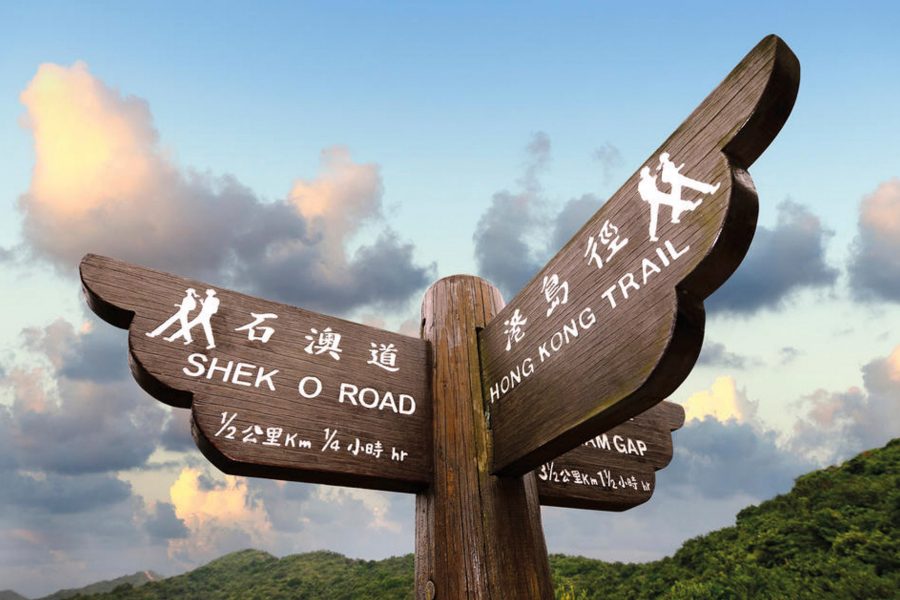The story behind Hong Kong's vast country parks

The image of Hong Kong around the world is that of an urban jungle – the famous skyline, the density of towerblocks, markets and neon-lit nightscapes. Yet passengers peeping out of the windows as they descend into Hong Kong International Airport will be greeted with quite different scenes – an island-dotted landscape of lumpy hills and forested, vertiginous mountains.
Remarkably for such a densely populated metropolis, around three quarters of all land is countryside and 40 per cent of Hong Kong’s total land area – 435 square kilometres – is protected within the boundaries of 24 country parks. Within them are forests, grasslands and hillside with 3,300 largely native plant varieties, and wildlife ranging from leopard and civet cats to wild boars and pythons. Globally endangered species such as pangolins and Romer’s tree frogs also roam freely, making the country parks important for conservation.

Credit: Shutterstock
But they are also a wonderful resource for people. Last year, around 13 million Hongkongers and tourists visited the country parks. They’re the go-to choice for simple hikes like Dragon’s Back in Shek O Country Park; long, gruelling hikes like Sunset Peak (the territory’s third highest), which borders both Lantau North and Lantau South Country Parks ; photography outings; and adrenaline-spiking paragliding.
During the 1960s and early 1970s more and more Hongkongers saw the need to preserve the countryside as an escape for those living within a city swollen by rapid development. It helped that one of those Hongkongers was the then colony’s governor, Lord MacLehose – a keen outdoors enthusiast after whom the 100-kilometre MacLehose Trail is named.
He guided a programme that led to the Country Parks Ordinance in 1976. Within three years 21 country parks had been designated. Hong Kong Country Parks writer Stella Thrower referred to Lord Maclehose as one of the ‘few clear-sighted men’ who promoted the country parks against a background of apathy and vested interest.
However, the country parks system involved some compromises. Some villages and farmland were excluded, resulting in the creation of enclaves – patches of land surrounded by, but outside of, the country park system. At the time it may not have seemed too important, with cheaper rice imports making it harder to earn a living on the land and many villagers leaving rural areas for life in the city or overseas. Many of these abandoned farmlands accidentally became unofficial nature reserves, home to frogs, fish, dragonflies and other wildlife.
Yet it wasn’t long before the property developers started eyeing the enclaves up for golf courses and luxury residences. In 2010, there was a public outcry as news broke that a landowner had destroyed large swathes of vegetation at Sai Wan, an idyllic coastal site along a popular hiking trail on the Sai Kung peninsula, ostensibly to clear the legal path for development.
The enclave situation remains a thorny issue. And as debates continue over Hong Kong’s lack of affordable housing, some policymakers have floated the (largely unpopular) idea of ceding areas of protected land for the development of new stacks of high rises. But for now, the country parks remain intact, protected and ready for visitors to pull on a pair of hiking shoes and explore some of the territory’s wilder side after taking in the urban jungle.
Hero image: ImageBROKER / Alamy Stock Photo / Argusphoto
Hong Kong travel information
- China – the Chinese Mainland, Hong Kong SAR, Macao SAR and Taiwan Region
- Hong Kong SAR - English
- Chinese Mainland (China) - English
- Taiwan, China - English
- 香港特別行政區 - 繁體中文
- 中国內地 - 简体中文
- 中國台灣 - 繁體中文
- Africa
- South Africa - English
- Asia
- Bangladesh - English
- Korea - English
- Singapore - English
- Cambodia - English
- 한국 - 한국어
- Sri Lanka - English
- India - English
- Malaysia - English
- Thailand - English
- Indonesia - English
- Maldives - English
- ประเทศไทย - ภาษาไทย
- Indonesia - Bahasa Indonesia
- Myanmar - English
- Vietnam - English
- Japan - English
- Nepal - English
- Việt Nam - tiếng Việt
- 日本 - 日本語
- Philippines - English
- Australasia
- Australia - English
- New Zealand - English